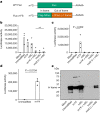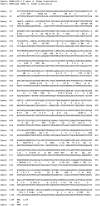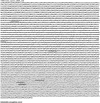N1-methylpseudouridylation of mRNA causes +1 ribosomal frameshifting
- PMID: 38057663
- PMCID: PMC10764286
- DOI: 10.1038/s41586-023-06800-3
N1-methylpseudouridylation of mRNA causes +1 ribosomal frameshifting
Abstract
In vitro-transcribed (IVT) mRNAs are modalities that can combat human disease, exemplified by their use as vaccines for severe acute respiratory syndrome coronavirus 2 (SARS-CoV-2). IVT mRNAs are transfected into target cells, where they are translated into recombinant protein, and the biological activity or immunogenicity of the encoded protein exerts an intended therapeutic effect1,2. Modified ribonucleotides are commonly incorporated into therapeutic IVT mRNAs to decrease their innate immunogenicity3-5, but their effects on mRNA translation fidelity have not been fully explored. Here we demonstrate that incorporation of N1-methylpseudouridine into mRNA results in +1 ribosomal frameshifting in vitro and that cellular immunity in mice and humans to +1 frameshifted products from BNT162b2 vaccine mRNA translation occurs after vaccination. The +1 ribosome frameshifting observed is probably a consequence of N1-methylpseudouridine-induced ribosome stalling during IVT mRNA translation, with frameshifting occurring at ribosome slippery sequences. However, we demonstrate that synonymous targeting of such slippery sequences provides an effective strategy to reduce the production of frameshifted products. Overall, these data increase our understanding of how modified ribonucleotides affect the fidelity of mRNA translation, and although there are no adverse outcomes reported from mistranslation of mRNA-based SARS-CoV-2 vaccines in humans, these data highlight potential off-target effects for future mRNA-based therapeutics and demonstrate the requirement for sequence optimization.
© 2023. The Author(s).
Conflict of interest statement
T.E.M. and A.E.W. are inventors on a pending patent application (2305297.0) related to mRNA technology.
Figures










Comment in
-
Modified mRNA produces frameshifted peptides.Nat Rev Drug Discov. 2024 Feb;23(2):104. doi: 10.1038/d41573-024-00003-9. Nat Rev Drug Discov. 2024. PMID: 38200237 No abstract available.
References
MeSH terms
Substances
Grants and funding
LinkOut - more resources
Full Text Sources
Other Literature Sources
Molecular Biology Databases
Miscellaneous

